Furnace Replacement Cost | How Much Will It Cost To Repair/Replace Gas, Electric, & Oil Heaters?
Diving into the ins and outs of furnace replacement costs and how to make sure you are properly maintaining this important piece of home equipment. Compare prices below, or follow this buying guide to discover the cost of repairing or buying new gas, electric, and oil heating systems.
America’s winter temperatures are getting less predictable. The U.S. Energy Information Administration (EIA) reports that recent winters have varied from anticipated temperatures by nearly 10 percent.
With temperatures potentially dropping so far below regional averages, it is more important than ever for Americans to have reliable furnaces in good condition. When the temperatures plummet, unreliable furnaces can leave your family in the cold.
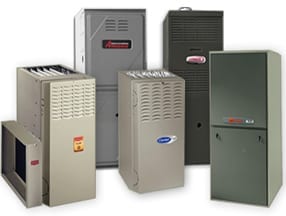
Here are some key facts that you need to know about to cost of repairing and replacing your furnace.
Furnace Repair vs Replacement
On average, quality furnaces last between 15 and 30 years. This means that, like getting new roofing, replacing a furnace isn’t something one needs to do often. In most cases, malfunctioning furnaces can simply be repaired.
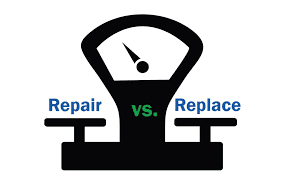
Often, furnace problems can be traced back to a handful of common problems. If you call a professional promptly when you discover a problem with your furnace, they can usually repair it quickly and relatively inexpensively. Common reasons for furnace malfunction include the following.
Dirty Filters
Furnace filters that are not changed regularly enough can become clogged. This interrupts airflow and strains furnace fans and motors. Replacing the filter and any damaged fans or motors will usually correct the problem.
To avoid these hazards, change your furnace’s filter consistently once a month.
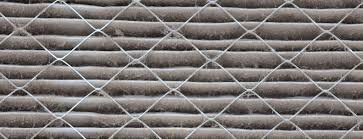
Faulty Pilot Lights
Damaged or interference with the pilot light can cause your furnace to fail. Determining why a pilot light is faulty can be challenging. It can be related to environmental factors, such as drafts, or to problems with other parts of your furnace.
Once the source problem is identified, however, it is usually simple to fix.
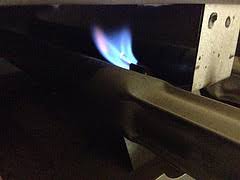
Broken Thermostats
When furnace thermostats go bad, they can cause your furnace to act erratically. This not only leaves your home uncomfortable but increases the wear and tear on your furnace. Fortunately, replacing thermostats is typically quick, easy, and inexpensive.
General Lack of Maintenance
Lack of proper maintenance over time can lead to furnace failure in numerous ways. When this happens, it is not always necessary to replace the furnace. A routine tune-up by a qualified professional can be enough to get your furnace up and running again.
Systemic Problems
Occasionally, furnace malfunctions result from systemic problems in your home. For example, an electric furnace may switch off because a shared circuit breaker is overloaded.
How Much Do Furnace Repairs Cost?
Nationwide, the average cost of home furnace repair ranges from around $160 to $800. Homeowners’ actual costs are determined by:
- The type of furnace they have
- Regional and seasonal variations in labor cost
- The cost of replacement parts
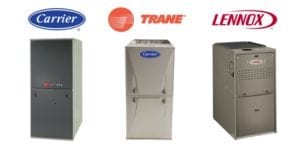
No matter what type of furnace you have, one of the easiest ways to keep repair bills down is to schedule a yearly tune-up. Ideally, these should be performed by professionals during the late summer or early fall. These visits typically cost approximately $100, with any filters or parts that are found to be needed costing extra.
Thermostat Repairs
Basic digital thermostats start at $20. Non-programmable ones top out around $40 while programmable ones can cost up to $120 each.
Wi-fi enabled thermostats cost between $100 and $250. Average labor costs for thermostat replacement run about $65 per hour.
Furnace Blower Motors Replacement
Blower motors are more expensive. Single-speed replacement motors cost between $400 and $600. Variable-speed motors cost between $600 and $1,300 each, including the labor hours to install them.
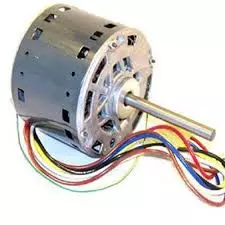
Heater Capacitors
Capacitors start at around $180 for both parts and labor. Depending on your furnace make and model, they can cost as much as $250 to replace.
Duct Cleaning
If your furnace problems are related to clogged or dirty ducts, you can expect to spend a minimum of $90 in repairs. Larger and more complex systems can cost up to $250 to clean.
Replacing Furnace Control Boards
Replacement control boards start at $600. They can run as high as $1,000 in some cases.
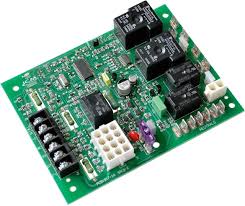
Routine Maintenance
Routine maintenance visits, which can address and resolve many of the most common furnace problems, typically start around $80 per visit. If serious maintenance or cleaning is needed, costs escalate to around $180.
When Is It Time to Replace Your Furnace?
When deciding whether to replace or repair your furnace, there are two primary criteria to consider. The first is your furnace’s age. The second is the estimated repair cost.

Furnace Age
In most cases, if your furnace is 10 years old or older you should consider replacing it. This is particularly true for furnaces with life-spans on the lower end of the spectrum.
It doesn’t make sense to pour large amounts of money into repairing a furnace with only a few years of life left. It is almost always better to simply buy a new furnace.
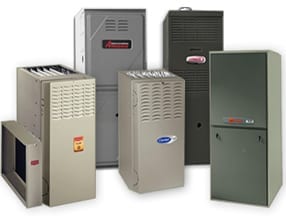
The exception to this is if you have a furnace make and model that routinely lasts closer to 30 years and which needs only very minor repairs. In those cases, replacing a small part such as a filter or thermostat can be a smart and cost-effective choice.
Estimated Cost to Replace House Heaters
Industry experts’ best furnace maintenance tips for deciding when to replace rather than repair can be summed up in a few easy “rules of thumb.” It is almost always better to replace than repair if your estimated repair bill is over $2,000 or more than half of the cost of a new furnace.
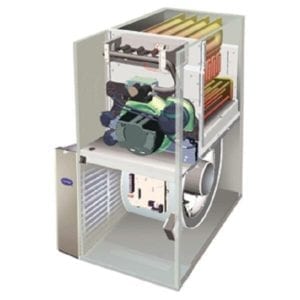
For example, imagine that a new furnace system for your home would cost $5,000. Unless your furnace was brand new and still under warranty, you would be better off buying a new one than repairing the existing one for anything over $2,000.
Professional Input
When in doubt, ask a professional to assess your system. A trained professional will be able to offer you better insight on the overall costs and benefits of repairs and replacements than you are likely to see yourself. They can also provide you with valuable furnace replacement tips that can save you time and money.
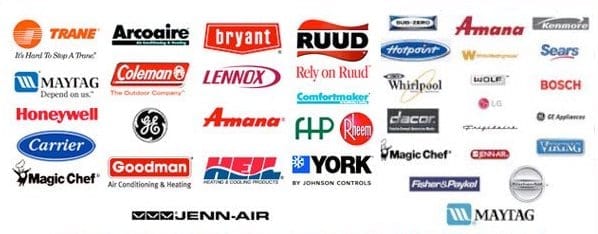
How Much Does Furnace Replacement Cost?
Even when you are meticulous about maintaining a furnace, it will need replacement sooner or later. Generally, new furnaces cost between $2,500 and $8,000. This includes:
- The cost of the furnace itself
- Related necessary materials
- Labor
- Disposal of the removed furnace
- Any necessary permits or legal paperwork
In general, the cost of the new furnace itself will account for approximately 60 percent of your total cost. Labor will account for about 25 percent of the cost, though this may be higher in certain regions of the country. The remaining 15 percent of the cost comes from additional factors such as other supplies, removal, and permitting.
If your new system requires different ductwork, you may see additional costs of between $300 and $600.
Obviously, larger homes with more square footage will need bigger furnaces. This can lead to higher replacement costs than replacing a furnace in a smaller home, regardless of which type of furnace you choose.
Gas Furnaces Replacement Cost
The average furnace replacement cost for a gas furnace is between $2,800 and $5,200. Here are some of the top gas furnace brands with common unit and installation costs:
- Amana (Unit: $895, Installation: $2,285)
- American Standard (Unit: $1,378, Installation: $3,800)
- Bryant (Unit: $975, Installation: $2,520)
- Coleman (Unit: $1,260, Installation: $3,075)
- Lennox (Unit: $1,450, Installation: $3,885)
Electric Furnace Replacement Cost
Electric furnaces are slightly more affordable than gas furnaces. Their average cost is between $1,000 and $5,500. Here are some of the top electric furnace brands with common unit and installation costs:
- Trane (Unit: $1,150, Installation: $2,325)
- Rheem (Unit: $745, Installation: $2,465)
- Goodman (Unit: $425, Installation: $1,765)
- York (Unit: $650, Installation: $2,150)
- Payne (Unit: $455, Installation: $1,825)
Oil Furnace Replacement Cost
Oil furnaces can be a great option where gas and electric furnaces are less available or practical to install. They tend to run around $6,000. Some of the best brands and average unit and installation costs are as follows:
- Armstrong (Unit: $1,375, Installation: $4,650)
- Carrier (Unit: $1,900, Installation: $6,150)
- Ducane (Unit: $1,750, Installation: $5,505)
- Heil (Unit: $1,827, Installation: $5,494)
- Miller (Unit: $1,950, Installation: $5,975)
Choosing a New Furnace
With the right maintenance, most furnaces last between 10 and 30 years. Choosing the right furnace for your needs involves looking at your home’s:
- Size
- Location and setup
- Desired energy efficiency
Furnace Size
Before choosing a furnace, you will need to know your home’s square footage. If your furnace will also be heating your attached garage or other space, be sure to take that square footage into account. Only shop for furnaces that are rated for the square footage that you need or higher.
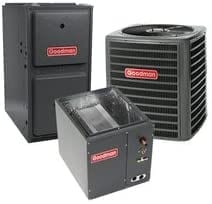
Location and Setup
Before choosing a furnace, consider what your home is already set up for and what sources of energy are most readily available and cost-effective. For example, if you have access to solar power, then an electric furnace may be your best bet. If your home is isolated and largely off-grid, an oil furnace may be a better fit.
Keep in mind that any time you need to change the type of fuel, ductwork, and other supporting systems related to your furnace, your installation costs will increase. Over the long term, however, switching to a less expensive fuel source may be the most cost-effective option.
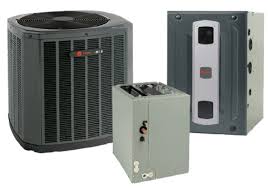
Energy Efficiency
Furnaces are rated for energy efficiency using a system called Annual Fuel Utilization Efficiency (AFUE) numbers. Ideally, you want to select a furnace with an AFUE of no less than 80 percent. The higher the number, the more efficient and cost-saving your furnace will be.
Highly rated systems can cost more than $200 less per year to run than less efficient systems. Investing in a highly-rated system upfront can pay for itself quickly.
New Furnace Installation
When looking at the sizable differences between the cost of a furnace and the cost of installation, it can be tempting to install a new furnace yourself. Yet doing so is almost always a terrible mistake.
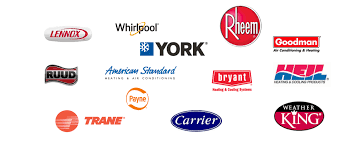
Best Furnace Brands
When buying a new furnace, here are tons of great brands to choose from. Here are some of the best furnaces to buy:
- Rheem
- Carrier
- TRANE
- RUUD
- Bryant
- Whirlpool
- Amana
- York
- Coleman
- Lennox
- Maytag
DIY Installation
Furnace installation is a complicated process. It involves multiple steps and moving heavy furnace units. It also involves things like:
- Electricity
- Gas lines
- Oil lines
- Ductwork
Mishandling any of these things will do more than making a mess. It can put your entire home and family in serious danger.
Installing a furnace yourself also robs you of valuable protection. If you install your furnace yourself, you are solely liable for any damages that the furnace unit or your home may experience as the result of any mistakes.
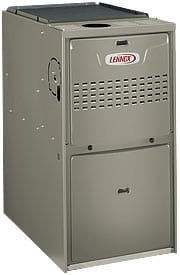
You may also void the warranty on the furnace and be in violation of your homeowner’s insurance. All of this can leave you with heavy costs on your hands from even small errors.
Professional Heater Installation
The professional installation of your new furnace offers you both convenience and protection. HVAC professionals are knowledgeable and equipped to make sure your new system is installed safely and correctly the first time.
Properly insured professionals guarantee their work, ensuring that if anything goes wrong the potentially hefty costs of necessary repairs don’t rest on your shoulders. Professional installation also keeps you compliant with your insurance and any warranties involved.
Preparing for Furnace Installation
Here are a few key tips on how to prepare for replacing a furnace.
First, give yourself plenty of time. Furnace replacement can be done in as little as a few hours. Unexpected glitches and delays can happen, though, and they are much less stressful if you’ve planned plenty of time for the project.
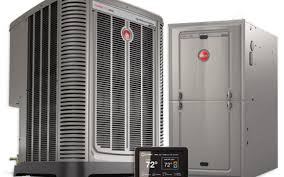
Second, take a few minutes ahead of time to clean up the area around the furnace. Remove any debris or items being stored in the area that might impede HVAC professionals’ ability to do their work. If possible, ensure that there is sufficient lighting and clear walkways in and out.
Third, communicate clearly and politely with the HVAC professionals doing the installing. This creates a positive environment for everyone and helps the project go smoothly.
Finally, be sure to have the HVAC professionals show you how to operate your furnace if it is a new model that you are not familiar with before they leave. Ask questions about maintenance and upkeep so that you can get the longest possible life from your new furnace.
Furnace Repair and Replacement
Now that you understand furnace replacement cost and repair options, find an HVAC professional near you and schedule some maintenance on your furnace to keep it running at its best. If your furnace is nearing the end of its functional life, start looking into what systems might be best to replace it with now. You can never go wrong by being proactive where your home’s furnace is involved.



My wife was telling me that our home is too cold. Our furnace is on but it doesn’t seem to do the trick. You said that the filters can be clogged and cause the furnace to strain its fans. Maybe that’s what is happening in my home, I’ll have a professional check it anyway.
It’s great that this article explains that it’s important to provide proper maintenance for your furnace to avoid furnace failure. When someone installs a new furnace, it would probably be best to talk to the installation contractor to see if they provide maintenance or if they know someone who does. This way, you can find someone that you trust and is able to care for the brand and model of furnace you purchase.
Thank you so much for talking about energy-efficient furnaces and how you can plan out your savings with them. Energy-efficiency has been a buzz topic within my family ever since we spent time over at our brother’s place and ended up in him spending a lot of money on his electric bill. To prevent that from happening to me, I’ll look for an HVAC contractor that can replace my current furnace with an even more efficient one.
It’s good to know that you should get a furnace with an 80% or higher AFUE. My furnace has been having problems last winter and I want to replace it. I’ll be sure to find an energy-efficient furnace so we won’t have any problems this winter.
That’s good to know that professionals will be able to repair a furnace quickly and for relatively not a lot of money. I could see how that would be a much more affordable option compared to letting the problems sit there and having to eventually replace the furnace. I’ll make sure to get someone to come and repair the furnace right away next time it has a problem so I could avoid having to replace it in the future.